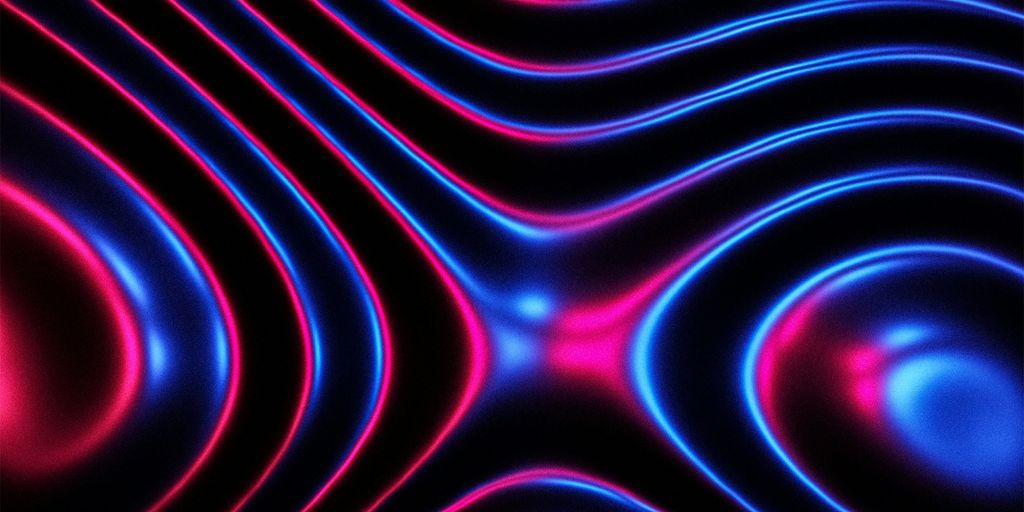Thinking about quantum physics can feel a bit much, right? It’s like trying to understand how a magic trick works, but way more complicated. But honestly, it’s not as scary as it sounds. There are some really great books out there that break it all down. If you’re curious about the tiny stuff that makes up everything, these books are a good place to start. They explain the weird rules of the universe without making your head spin too much. Let’s look at some good options for quantum physics for beginners books.
Key Takeaways
- Quantum mechanics deals with the very small, and its rules are different from what we see every day.
- Things like light and matter can act like both waves and particles, which is a strange idea.
- Quantum physics includes concepts like superposition (being in many states at once) and entanglement (connected particles).
- Famous scientists like Einstein and Bohr made big contributions to our ideas about quantum physics.
- Quantum physics isn’t just theory; it’s used in things like lasers and new kinds of computers.
Foundational Concepts in Quantum Physics
So, you want to get a handle on quantum physics? It’s a bit like trying to understand how a magic trick works, but instead of a magician, it’s the universe itself doing the disappearing and reappearing acts. We’re talking about the really, really small stuff here – atoms, electrons, photons, the building blocks of everything.
Understanding Quantum Mechanics
At its heart, quantum mechanics is the science that describes how nature behaves at the smallest scales. Forget about the everyday rules you’re used to; down here, things get weird. Particles don’t just sit still; they can be in multiple places at once, and their properties aren’t fixed until we actually look at them. It’s a whole different ballgame, and this book, "Quantum Physics for Beginners: From Quantum Confusion to Clarity," can help make sense of it all. It’s a good starting point for anyone feeling a bit lost in the quantum world.
The Wave-Particle Duality Explained
One of the first mind-benders you’ll encounter is the idea that tiny things, like electrons, can act like both waves and particles. Think about it: a particle is like a tiny ball, solid and localized. A wave is spread out, like ripples on water. Quantum mechanics says these little guys can be both. Depending on how you set up an experiment, you’ll see one behavior or the other. It’s not that they are one or the other; they just act like it when we poke and prod them.
Quantum Superposition and Entanglement
Then there’s superposition. This is the concept that a quantum system can exist in multiple states simultaneously. An electron, for example, could be spinning both clockwise and counterclockwise at the same time. It’s only when we measure its spin that it ‘decides’ to be one or the other. Entanglement is even stranger. Imagine two particles linked together, no matter how far apart they are. If you measure a property of one, you instantly know the corresponding property of the other. Einstein famously called this "spooky action at a distance," and it’s a real thing. It’s like having two coins that are magically linked: if one lands heads, the other must land tails, even if they’re on opposite sides of the galaxy. This interconnectedness is a key feature of the quantum universe.
Exploring the Quantum Realm
So, we’ve touched on the basics, but what happens when we really start looking at how things work at the tiniest levels? It gets pretty weird, honestly. Things don’t behave like the everyday objects we’re used to. It’s like stepping into a different universe with its own set of rules.
The Uncertainty Principle in Practice
This is one of those ideas that sounds simple but has big consequences. Basically, you can’t know everything about a tiny particle at the same time. If you measure its position really accurately, you lose track of its speed, and vice versa. It’s a trade-off built into nature itself. Think about trying to catch a fly in a dark room. The moment you shine a light to see exactly where it is, it zips away, and you have no idea how fast it was going. It’s not that our tools aren’t good enough; it’s just how the universe is wired.
Quantum Tunneling: Beyond Classical Limits
Imagine rolling a ball towards a hill. If the ball doesn’t have enough energy, it just rolls back. Simple, right? Well, in the quantum world, that ball has a small chance of just appearing on the other side of the hill, even if it didn’t have the energy to go over it. This is called quantum tunneling. It’s like the ball cheats and finds a shortcut. This effect is actually used in some technologies, like scanning tunneling microscopes, which let us see individual atoms. It’s pretty wild to think about things just popping through barriers.
The Role of Observation in Quantum Systems
This is where it gets really mind-bending. In quantum physics, the act of observing something can actually change it. Before you look, a particle might be in multiple states at once (we’ll get to that!). But the moment you measure it, it has to pick just one state. It’s like a shy actor who only performs when the audience is watching. This idea has led to a lot of philosophical debate, but it’s a consistent finding in experiments. It makes you wonder about what reality even means when it seems to depend on whether we’re looking. For parents trying to connect with kids remotely, imagine a shared virtual space where actions are influenced by presence, much like how Bedtime VR Stories creates an interactive environment.
Key Figures and Their Contributions
Quantum physics wasn’t just invented by one person; it was built piece by piece by some seriously brilliant minds. Thinking about these folks really helps put the whole picture together, you know? It’s like looking at the blueprints of the universe.
Einstein’s Quantum Insights
Albert Einstein, yeah, that Einstein, had some pretty big ideas about quantum stuff, even though he famously wasn’t a huge fan of some of its weirder parts. He got a Nobel Prize for explaining the photoelectric effect. Basically, he figured out that light isn’t just a wave; it also comes in little packets of energy called photons. This was a big deal because it showed that energy itself could be "quantized," meaning it comes in discrete amounts. He really pushed the idea that light could act like a particle. It’s a bit like saying water isn’t just a flow, but also made of tiny, individual water molecules. He also pondered the implications of quantum mechanics, even if he was uneasy about its probabilistic nature, famously saying "God does not play dice." You can get a simplified explanation of these principles at quantum physics and mechanics principles.
Bohr’s Atomic Model and Beyond
Niels Bohr took things a step further, especially when it came to atoms. Before Bohr, people thought electrons just zipped around the nucleus like planets around the sun, but that didn’t really explain why atoms were stable. Bohr proposed that electrons could only exist in specific energy levels, like rungs on a ladder. They couldn’t be in between. When an electron jumps from a higher level to a lower one, it gives off light. This model was a huge leap forward in understanding how atoms work and how they interact. It helped explain things like the colors you see when different elements are heated up. It’s a bit like saying a car can only be in first gear, second gear, or third gear, but never in between.
Feynman’s Path Integrals
Richard Feynman was a bit of a rockstar in physics. He came up with this really cool way of looking at quantum mechanics called path integrals. Instead of just thinking about one path a particle takes, Feynman said you have to consider all possible paths it could take between two points. It sounds wild, but it turns out this approach is incredibly powerful for calculating how quantum systems behave. It’s like trying to figure out the best route to a friend’s house, but instead of just looking at the main roads, you consider every single alley, side street, and even hopping over fences. This method is super useful in quantum field theory, which is how we describe fundamental particles and forces. Feynman’s work really changed how physicists thought about these tiny interactions.
Practical Applications of Quantum Physics
It’s pretty wild to think about, but the weird rules of quantum mechanics aren’t just for theoretical physicists in labs. They’re actually behind a lot of the technology we use every single day. It’s not just abstract ideas; these principles have real-world uses.
Quantum Computing Explained
So, what’s the big deal with quantum computers? Instead of using bits that are either a 0 or a 1, like your regular computer, quantum computers use qubits. Qubits can be a 0, a 1, or both at the same time, thanks to something called superposition. This lets them do calculations way faster for certain kinds of problems. Think about drug discovery or figuring out complex financial models – quantum computers could really speed things up. It’s a whole new way of processing information.
Lasers and Their Quantum Principles
Lasers are everywhere, aren’t they? From the scanner at the grocery store to the Blu-ray player in your living room, lasers rely on quantum mechanics. The whole idea is based on atoms getting excited and then releasing photons (light particles) in a very organized way. This process, called stimulated emission, is a direct result of quantum principles. It’s how we get that focused, powerful beam of light.
Medical Imaging and Quantum Technology
Quantum physics also plays a role in medicine. Techniques like Magnetic Resonance Imaging (MRI) use the quantum properties of atomic nuclei to create detailed images of the inside of your body. This helps doctors diagnose all sorts of conditions without needing to cut you open. Plus, there’s ongoing work in quantum sensing that could lead to even more precise medical diagnostics in the future. It’s amazing how these tiny quantum effects can help us see what’s going on inside us. For secure communication, quantum encryption is a big deal, making sure sensitive data stays private by using the laws of physics itself, which you can read more about at a4a0.
Navigating Quantum Physics for Beginners Books
So, you’ve decided to tackle quantum physics. That’s pretty cool. It can seem a bit much at first, right? Like trying to read a map in a language you don’t know. But don’t worry, there are some really good books out there that make it way more approachable. Picking the right one is half the battle, though. You don’t want something that’s going to make your head spin before you even get to the good stuff.
Choosing the Right Introductory Text
When you’re looking for a book, think about what you already know. Are you starting from scratch, or do you have some science background? Some books assume you know a bit about classical physics, while others start with the absolute basics. Look for books that explain concepts clearly, maybe with analogies or real-world examples. It’s also helpful if the author has a knack for making complex ideas feel less intimidating. Check out reviews to see what other beginners thought. Sometimes, a book that’s a bit older is actually better because it might focus more on the core ideas without getting bogged down in the latest, super-advanced theories.
Essential Quantum Physics for Beginners Books
There are a few standouts that pop up a lot. You’ve got your classics, like "Quantum Mechanics: The Theoretical Minimum" by Leonard Susskind and Art Friedman, which is great if you don’t mind a bit of math. For a more conceptual approach, "Something Deeply Hidden: Quantum Worlds and the Emergence of Spacetime" by Sean Carroll is a popular choice. It really gets into the interpretations of quantum mechanics. If you want something that feels more like a story, "The Making of the Fittest: DNA and the Ultimate Forensic Record of Evolution" by Sean B. Carroll (different Sean Carroll!) isn’t about quantum physics, but it shows how clear scientific writing can be. For quantum physics specifically, "Quantum Physics for Dummies" is exactly what it sounds like – a straightforward intro. Another good one is "How to Teach Quantum Physics to Your Dog" by Chad Orzel, which uses a dog as a way to explain things. It’s surprisingly effective!
Resources for Deeper Quantum Study
Once you’ve got a handle on the basics, you might want to go further. Websites like the Perimeter Institute for Theoretical Physics have articles and videos that can help. You can also find online courses on platforms like Coursera or edX that cover quantum mechanics. For a look at how light is being manipulated in new ways, check out the work on zero-index materials, which could lead to faster microchips. It’s pretty wild stuff, showing how quantum ideas are already impacting technology. Keep an eye on developments in quantum computing and quantum communication; they’re changing fast.
The Future of Quantum Exploration
So, what’s next for quantum physics? It’s a big question, and honestly, the scientists working on it are still figuring a lot of it out. But there are some really exciting areas they’re looking into.
Quantum Gravity Theories
Right now, we have two main sets of rules for how the universe works: general relativity for big stuff like planets and stars, and quantum mechanics for tiny stuff like atoms. The problem is, they don’t play nicely together. Think of it like trying to use a map of your neighborhood to navigate the entire galaxy – it just doesn’t scale. Scientists are trying to find a way to make these two theories fit, a theory of quantum gravity. It’s like trying to find the instruction manual for the whole universe. Some ideas involve extra dimensions or tiny vibrating strings, but it’s still very much a work in progress. It’s a tough puzzle, but if they solve it, it could change how we see everything.
The Search for a Unified Field Theory
Building on the idea of quantum gravity, some physicists are looking for an even bigger picture: a unified field theory. This would be a single framework that explains all the fundamental forces of nature – gravity, electromagnetism, and the strong and weak nuclear forces – and all the particles that make up matter. Imagine having one set of rules that explains why your coffee cup stays on the table, how the sun shines, and why magnets stick together. It’s the ultimate goal for many physicists. It’s the scientific equivalent of finding the master key to the universe. While we’ve made progress, like unifying electromagnetism and the weak nuclear force, getting gravity into the mix is the big challenge. It’s a bit like trying to fit a square peg into a round hole, but with math and physics.
Emerging Quantum Technologies
Beyond the big theories, quantum physics is already starting to show up in new technologies. We’re talking about things that sound like science fiction but are becoming real. Quantum computers, for instance, promise to solve problems that are impossible for today’s computers. They could revolutionize medicine, materials science, and artificial intelligence. Then there are quantum sensors, which are incredibly precise and could lead to better medical imaging or navigation systems. Even communication is getting a quantum upgrade with quantum cryptography, which offers unbreakable security. It’s pretty wild to think about how these tiny, weird quantum rules are going to change our everyday lives. If you’re curious about how these ideas are presented visually, you might find "Quantum in Pictures" helpful.
So, What’s Next?
So, we’ve looked at some books that can help you get started with quantum physics. It’s a big topic, for sure, and these books are just the beginning. Don’t worry if it doesn’t all click right away. Quantum mechanics is weird, even for the pros. The main thing is to keep reading and keep asking questions. Maybe you’ll find a new favorite author or a concept that really grabs you. Who knows, maybe you’ll even start seeing the world a little differently. Happy reading!
Frequently Asked Questions
What exactly is quantum physics?
Quantum physics studies the super tiny stuff, like atoms and the bits inside them. It explains how these tiny things act in ways that seem really weird compared to our everyday world. Think of it as the rulebook for the smallest parts of everything.
What does ‘wave-particle duality’ mean?
Imagine light sometimes acting like a wave, like ripples on water, and other times like tiny particles, like little balls. That’s wave-particle duality! It means tiny things can be both at the same time, which is super strange but true.
Can you explain superposition and entanglement simply?
Superposition is like a coin spinning in the air before it lands – it’s both heads and tails at once. Entanglement is even wilder: two tiny particles can be linked so that if you know something about one, you instantly know something about the other, no matter how far apart they are. It’s like magic, but it’s science!
What is the Uncertainty Principle?
The Uncertainty Principle says you can’t know everything perfectly about a tiny particle at the same time. For example, the more you know exactly where it is, the less you know how fast it’s going, and vice versa. It’s a fundamental limit on what we can measure.
What is quantum tunneling?
Quantum tunneling is when a tiny particle can pass through a barrier, like a ghost walking through a wall, even if it doesn’t have enough energy to go over it. It’s a bizarre effect that happens because of quantum rules.
Where do we see quantum physics in real life?
Quantum physics is used in lots of cool technology! Lasers, the kind used in barcode scanners and CD players, work because of quantum principles. Also, things like MRI machines in hospitals and the super-fast computers scientists are building, called quantum computers, rely on quantum physics.














